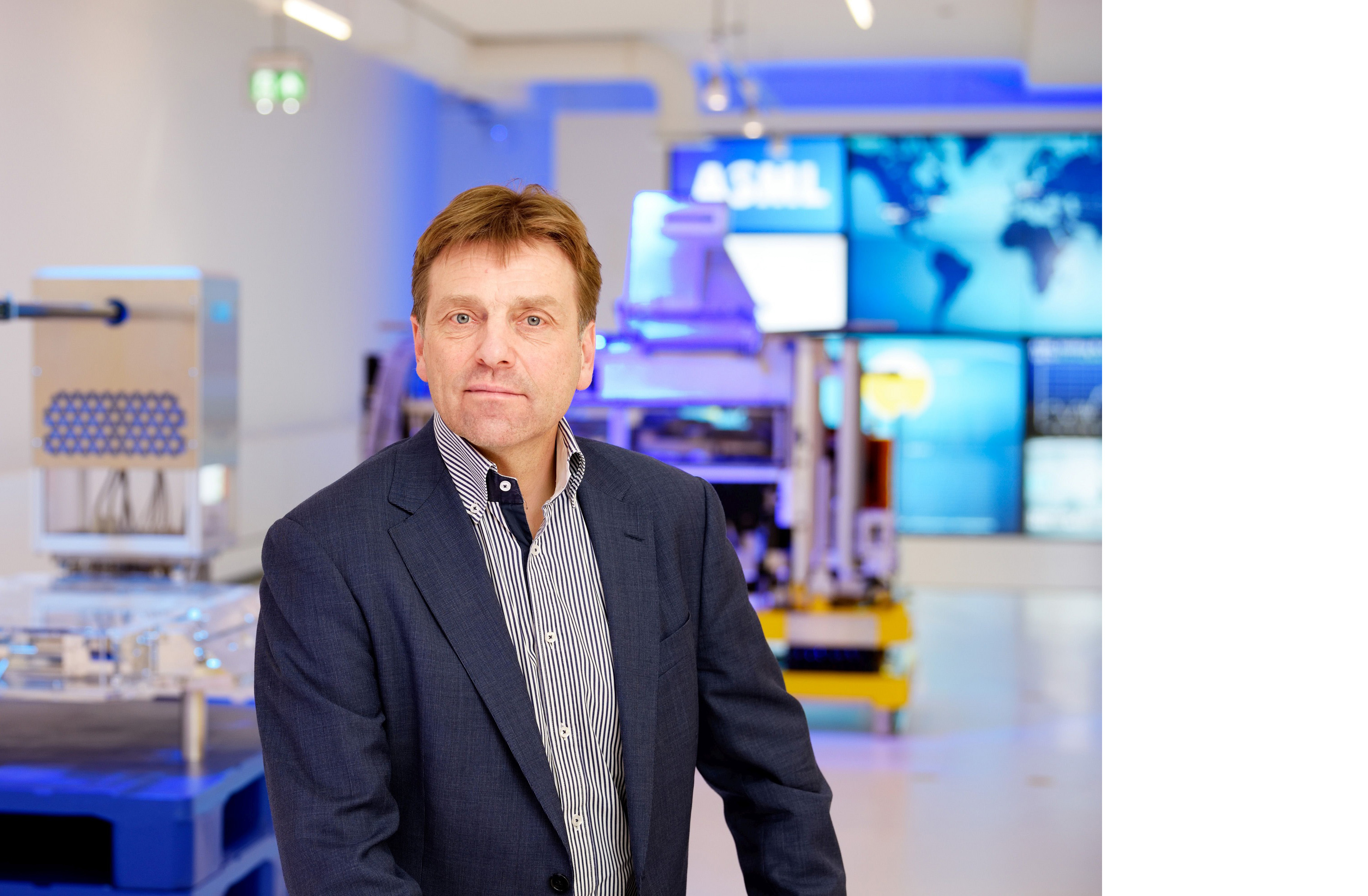
Creating a mutual understanding
Such a close, large, long term and extensive cooperation between a private company and academic researchers as is being embodied by ARCNL, has never been established before in the Netherlands. ‘That means we are pioneering, and continuously looking for the optimal balance between academic freedom and industrial relevance,’ says ASML Director of Research Wim van der Zande.

How did you get involved in ARCNL?
‘My former boss at ASML and one of ARCNL’s founding fathers, Bart Noordam, asked me to become the point of contact for ARCNL at ASML. Since I have a background in academics, this makes perfect sense. My most important task is to create and maintain a mutual understanding between the people of both parties. A public-private partnership at this scale is unique, certainly for the Netherlands but probably also from an international point of view. This is a voyage of discovery for all those involved, and we are continually striving to find the optimum between academic science and industrial relevance.’
In what way does ARCNL supplement ASML’s own research?
‘The research at ARCNL has more of a “man on the moon” character: it has a longer horizon and enjoys more freedom. At the same time, all researchers at ARCNL are fully aware of the industrial context, which makes it different from the science being done at other academic institutions.
Perhaps the main difference between us is that when we do research at ASML, the ultimate goal is to make something work. If it works, but we don’t fully understand why, then that’s enough – we are happy. As a scientist at ARCNL you have to go the extra mile to get a fundamental understanding of all processes. That way, you can hopefully discover something totally new – which eventually, in 10 years time perhaps, industrial researchers at ASML or elsewhere can use to develop products.
Every system becomes conservative when it keeps everything within its own walls. We need the refreshing look from outsiders to help us innovate. That is why, besides our active involvement in ARCNL, we also work with a large network of PhDs and post-docs at universities and knowledge institutes elsewhere.’
What have you learnt over the past three years?
‘That it is all about communication. All those involved need to keep each other posted on the developments on both sides. I’ve also learnt that optimizing such a public-private partnership is very complex. How can you make sure that when we look back after 10 years, we have achieved something that we agree was worth the effort – especially when you consider that major breakthroughs often depend on serendipity? I still struggle with that question.’
What do you hope ARCNL will lead to?
‘There are three different aspects I would like to see. First and foremost, I hope we will be able to create a stable knowledge environment where it is natural to gather the brightest people to think about future challenges, whether they are employed by universities or by companies. Second, I hope that ARCNL will turn out to be a place where young, enthusiastic and smart people want to pursue a career, since it combines quality with ambition. And of course, I also hope to see some major breakthroughs in lithography.
We need new ideas and insights to keep miniaturizing electronics and keep increasing the functionality of chips, once we move beyond the technologies that are now under active development. Today, semiconductors enable things that used to be in the realm of science fiction, like self-driving cars and artificial intelligence. I hope that at some point in the future, we look back at a breakthrough achieved at ARCNL as having played a role in continuing this innovation.’
Wim van der Zande has been Director of Research at ASML since 2014 and is a member of the Integration group at ARCNL. Previously, he was full Professor of Physics at Radboud University.
Picture credits: Bart van Overbeeke
Read also the interviews with
- Joost Frenken, ARCNL’s director :The beginning of a new tradition
- Marc Vrakking, chairman of ARCNL’s Scientific Advisory Committee: Providing long-term innovation
- Pavel Antonov, PhD student: Proud pioneering PhD student
- Watch ARCNL video: What do we need for tomorrow’s smartphone?
- Maarten Voncken & Wim Symens, researchers ASML: Supporting a long-term relationship : New ASML liaison at ARCNL
- Ronnie Hoekstra (ARCNL), Caspar van der Wal (RUG): One year into partnership University of Groningen: how is it going and what to expect?







